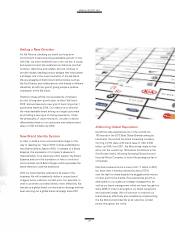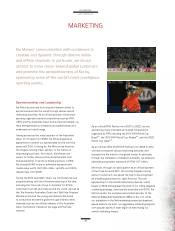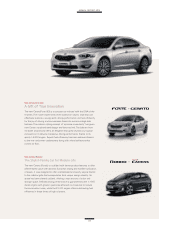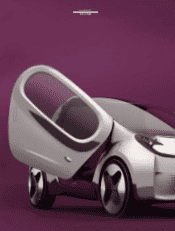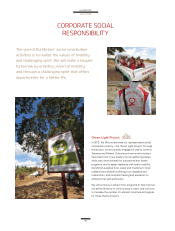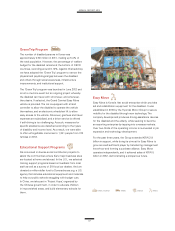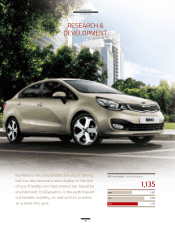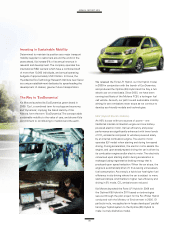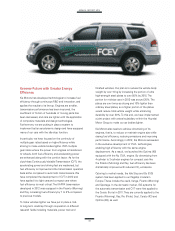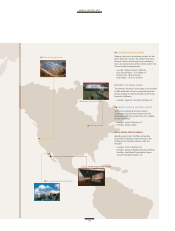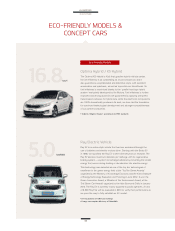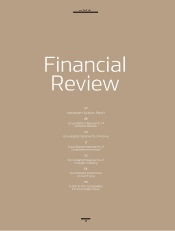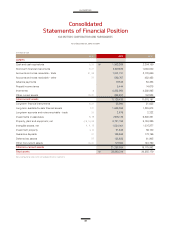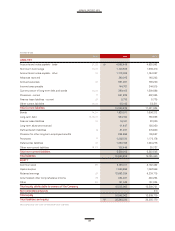Kia 2012 Annual Report Download - page 39
Download and view the complete annual report
Please find page 39 of the 2012 Kia annual report below. You can navigate through the pages in the report by either clicking on the pages listed below, or by using the keyword search tool below to find specific information within the annual report.
We released the Forte LPi Hybrid, our first hybrid model,
in 2009 in conjunction with the launch of EcoDynamics,
and produced the Optima (K5) Hybrid and the Ray, a full-
electric car on a test basis. Since 2008, we have been
running test fleets of the Mohave FCEV, a hydrogen fuel
cell vehicle. As such, our path toward sustainable mobility
aiming for zero emissions never stops as we continue to
develop eco-friendly models and technologies.
HEV (Hybrid Electric Vehicle)
An HEV is a car with two sources of power – one
traditional internal combustion engine and one battery-
powered electric motor. Its fuel efficiency and power
performance are significantly enhanced with lower levels
of CO2 emissions compared to vehicles powered solely
by an internal combustion engine. The electric motor
operates (EV mode) when starting and during low-speed
driving. During acceleration, the electric motor assists the
engine, and upon steady-speed driving the car is driven by
its combustion engine and/or electric motor. The electricity
consumed upon starting and/or during acceleration is
recharged using regenerative braking energy that is
produced upon speed reduction. When the car stops, the
engine is automatically shut off, thus saving unnecessary
fuel consumption. As a result, a hybrid car has higher fuel
efficiency in city driving where the car is subject to many
starts and stops. And thanks to higher fuel efficiency and
driving in EV mode, CO2 emissions are reduced.
Kia Motors launched the Forte LPi Hybrid in 2009 and
the Optima (K5) Hybrid in 2011 based on technologies
secured through the pilot project for the Rio (Pride) Hybrid
conducted with the Ministry of Environment in 2005. Of
particular note, we applied an in-house developed ‘parallel
hard-type’ hybrid system to the Optima (K5) Hybrid to
make it a truly distinctive model.
Investing in Sustainable Mobility
Determined to maintain its position as a major transport
mobility supplier to customers around the world in the
years ahead, Kia invests 6% of its annual revenue in
research and development. The company operates five
international R&D centers which have a combined staff
of more than 10,000 individuals, and annual operating
budgets of approximately USD 3 billion. In Korea, the
Hyundai-Kia Eco-Technology Research Institute near Seoul
is a unique establishment dedicated to spearheading the
development of cleaner, greener future transportation.
The Way to ‘EcoDynamics’
Kia Motors launched its EcoDynamics green brand in
2009. ‘Eco’, a combined term for ecology and economy,
and ‘Dynamics’, implying the brand identity of Kia
Motors, form the term ‘EcoDynamics.’ The concept adds
sustainable mobility to the value of cars, and shows Kia’s
commitment to contributing to mankind and the earth.


